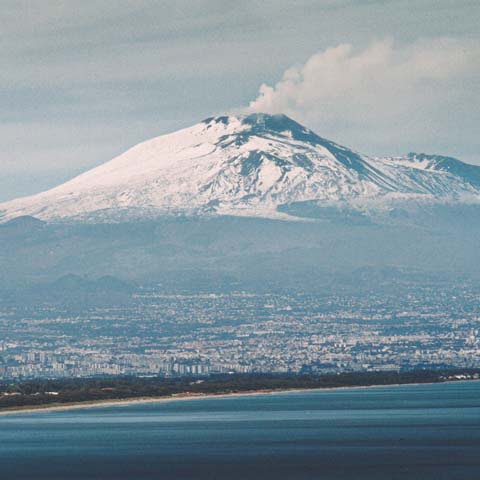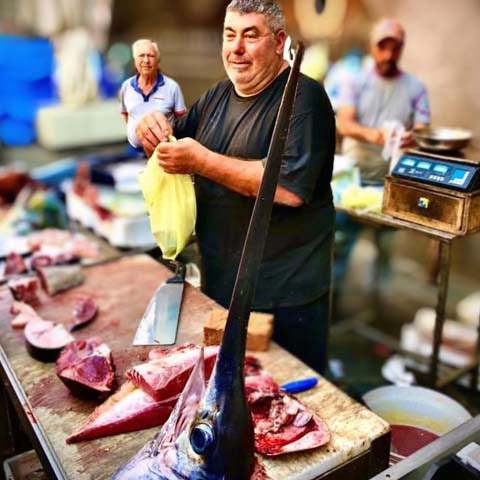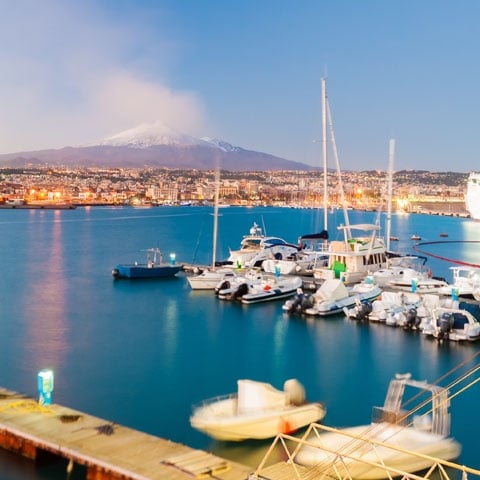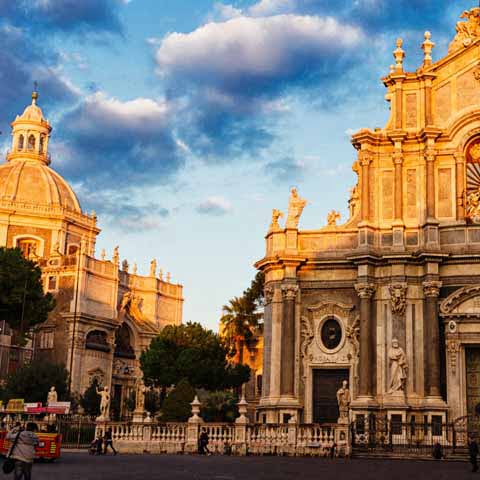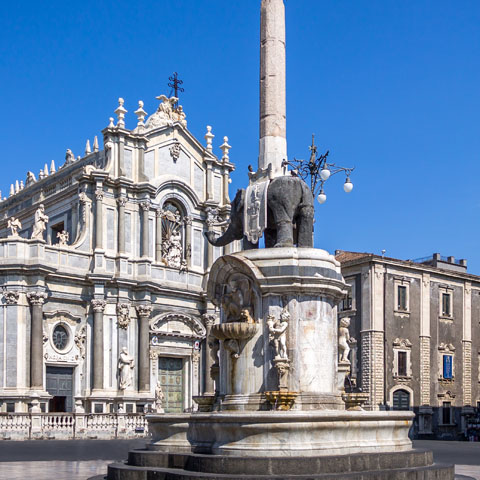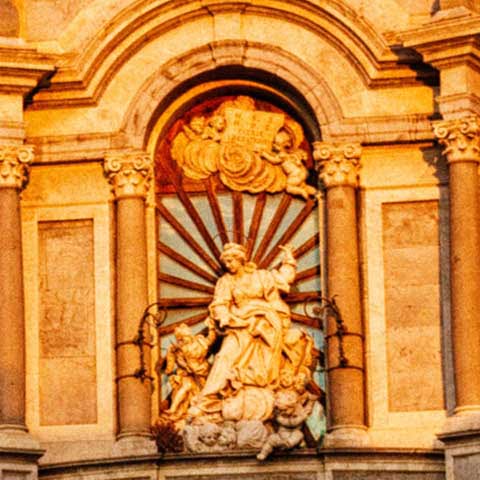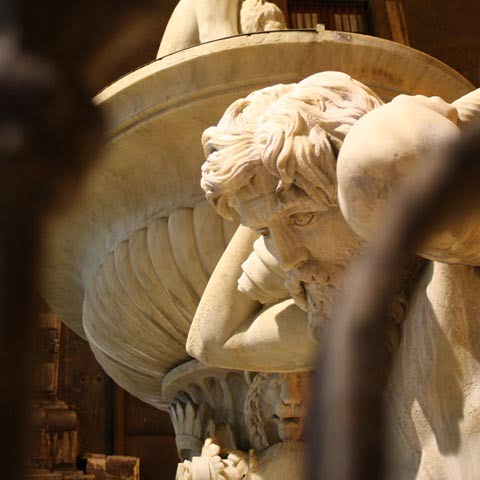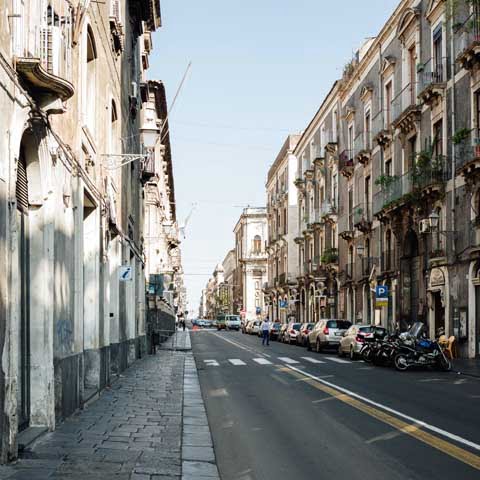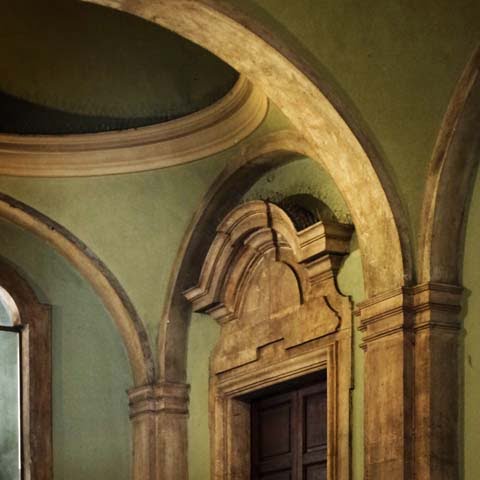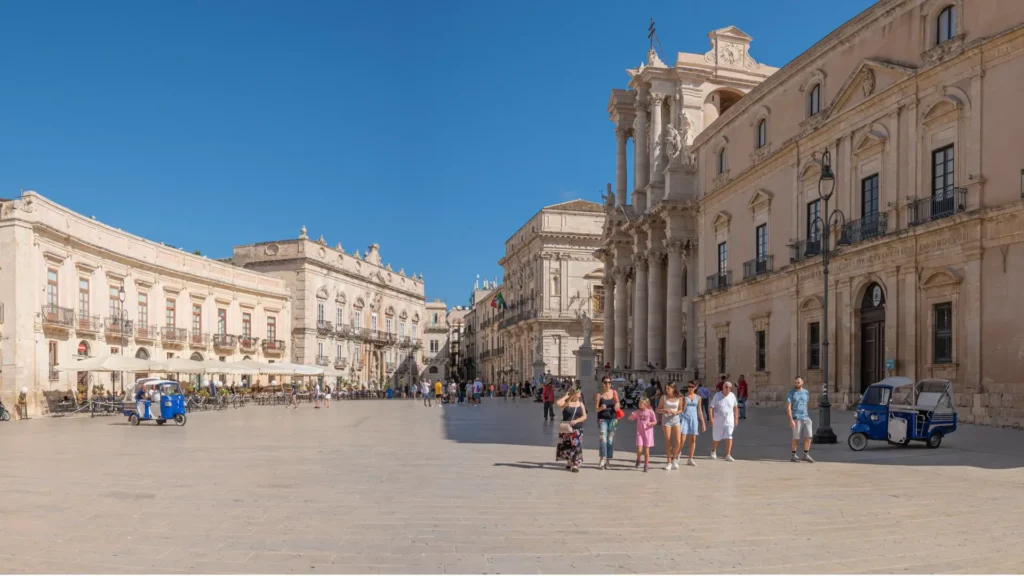Perched upon the far east coast of the Italian island of Sicily is the breathtaking city of Catania. This large metropolitan city is simply lovely with a beautiful cityscape that faces the sparkling blue waters of the Ionian Sea. This gorgeous city of roughly three hundred thousand people features a marvelous combination of magnificent architecture, flourishing culture, and amazing cuisine. If you will be traveling to Sicily, plan to make a stop in the charming city of Catania and discover why it is such a popular destination.
Catania is a hub for tourism in Sicily largely because of the older part of the city that features stunning Baroque architecture and is designated as a World Heritage Site protected by the United Nations Educational Scientific Cultural Organization (UNESCO). Here visitors will find dozens of historical churches, lavish palaces, and elegant theaters.
As an added bonus, the city of Catania is also home to a subterranean network of tunnels. These underground passageways are thought to have once been used as catacombs centuries ago. Also found in subterranean Catania are ancient streets and structures such as churches, amphitheaters, and thermal baths.
The city’s history is largely responsible for the now subterranean part of the city. Remarkably, the city’s roots can be traced back as far as 730 BC. For much of its early existence, the city is thought to have been mostly independent. However, in 476 BC, Hiero I of Syracuse drove out many of the city’s original inhabitants, replaced them with new and more willingly ruled inhabitants before renaming the area Aetna after the nearby Mount Etna volcano. In the ensuing years, the city fell to various rulers including the Romans, Moors, Normans, Spaniards, and more before eventually becoming part of the Unified Kingdom of Italy in the mid-nineteenth century.
Catania’s rich history also lends itself to the city’s old world and modern culture. During the Renaissance period, the city was highly regarded as a center for culture, art, and politics. Several renowned cultural figures called Catania home including a legislator and philosopher named Charondas, a poet called Stesichorus, and a philosopher by the name of Xenophanes. The city is also known for being a part of the art and literature world via famous composers Vincenzo Bellini and Giovanni Pacini as well as writers such as Giovanni Verga, Federico De Roberto, Nino Martoglio, and Luigi Capuana.
With so much culture in this Italian vacation destination, it is not surprising that education also has quite a legacy in Catania. One of the oldest universities in Sicily, the University of Catania, was founded in the fifteenth century and is attended by an estimated sixty thousand plus students who seek undergraduate and postgraduate degrees. Scuola Superiore is another local educational institution with close ties to the university that offers undergraduate and postgraduate programs. The Istituto Musicale Vincenzo Bellini is well regarded for its music studies and the Accademia di Belle Arti for its rich art studies.
The cuisine of Catania has a decidedly Sicilian flair. One the more famous dishes here is pasta alla Norma. This mouthwatering first course, named after one of Bellini’s operas, is made with eggplant, tomatoes, and ricotta. Also a local favorite in the city is horse meat which is frequently cooked on coals and served in both restaurants and on the street. Be sure not to miss the open-air seafood markets with one of the finer fish markets located just behind the Cathedral of Catania.
When it comes to traveling to Catania, most visitors travel via airplane to the Catania Fontanarossa International Airport. This airport is one of the largest in southern Italy. It is also possible to set sail for the island from the mainland by ferry boat.
For travelers who have arrived on Sicily, transportation to Catania is generally available via several motorways that connect to cities such as Messina and Palermo. The city of Catania features wide streets, so traveling the landmarks of the city is most often done via car or on foot.
GEOGRAPHY
Just to the west of Italy’s mainland is the island of Sicily. This island is a prominent vacation destination for those taking trips to Italy. Located on the far east cost of Sicily is the city of Catania. It sits close to the base of Mount Etna, is surrounded by beautiful vineyards, and faces the gorgeous waters of the Ionian Sea.
In addition to the above ground natural landmark of Mount Etna, Catania is known for its subterranean rivers. The Amenano River is mostly subterranean, but does surface at one point near the city’s Piazza Duomo. The Longane, sometimes referred to as Lognina, is also a subterranean river of the city.
Because of Catania’s proximity to the ocean, Mount Etna, and tectonic plates, it is only natural that the area occasionally sees earthquakes and volcanic eruptions.
CLIMATE
Catania, as most of Sicily, enjoys a largely Mediterranean climate. The summers within Catania are typically incredibly warm with temperatures on average between 80 and 90 degrees Fahrenheit. This makes the city a traveler favorite during the warm summer months.
Winters in Catania are fairly mild with temperatures seldom dipping below freezing. Snow rarely falls on the streets of Catania primarily due to the massive volcano of Mount Etna blocking potentially cold northern winds.
The area does receive a decent amount of rainfall. Historically, the region has been known to reach up to twenty inches of rain within a year. The wettest months tend to stretch from late fall to early spring.
ONLY IN CATANIA
One can scarcely take in the beauty of Catania without seeing the nearby and imposing Mount Etna that rises tall above it. Mount Etna is the highest point in Sicily and is estimated to stand approximately eleven thousand feet high, making it Europe’s tallest active volcano. It is also considered to be one of the most active volcanos in Europe and in the world and is designated as such by UNESCO as a World Heritage Site.
This volcano is widely documented as affecting large parts of Catania during the seventeenth century. However, residents of the city that live just beneath the volcano also reap unique agricultural benefits. The dirt and rock combination from previous lava flows of the volcano contains rich minerals that help the local agricultural industry thrive. In particular, the minerals allow grape vineyards to flourish, which ultimately contribute to a fabulous and distinctive Sicilian wine.
For visitors that want to see the glory of Mount Etna up close, there is the option of taking a shuttle to the crater where it is possible to hike along the rim.
The enchanting town of Catania is one of Sicily and Italy’s best kept secrets. Discover amazing natural beauty and intricate architecture above ground and subterranean marvels below. A vacation to Italy is not complete without a stay in remarkable Catania.
*SPECIAL NOTE: Because the Italian city of Catania can experience earthquakes and volcanic eruptions, at times repairs may be needed in various parts of the city. Some of the monuments and landmarks described in the narrative above may be described in their pre-earthquake and volcanic eruption condition.
Travel Guides
The Sicily Region of Italy
The Cities of Sicily, Italy
